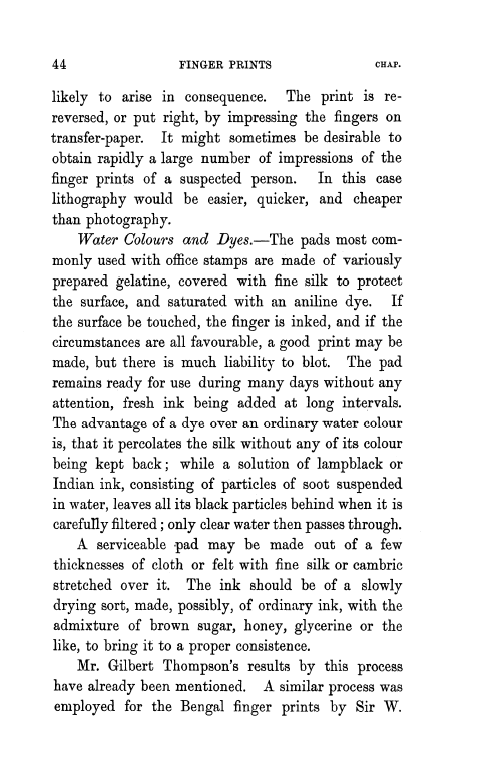| ||||||

OCR Rendition - approximate
4 4 FINGER PRINTS CHAP. likely to arise in consequence. The print is rereversed, or put right, by impressing the fingers on transfer-paper. It might sometimes be desirable to obtain rapidly a large number of impressions of the finger prints of a suspected person. In this case lithography would be easier, quicker, and cheaper than photography. Water Colours and Dyes. The pads most commonly used with office stamps are made of variously prepared gelatine, covered with fine silk to protect the surface, and saturated with an aniline dye. If the surface be touched, the finger is inked, and if the circumstances are all favourable, a good print may be made, but there is much liability to blot. The pad remains ready for use during many days without any attention, fresh ink being added at long intervals. The advantage of a dye over an ordinary water colour is, that it percolates the silk without any of its colour being kept back ; while a solution of lampblack or Indian ink, consisting of particles of soot suspended in water, leaves all its black particles behind when it is carefully filtered ; only clear water then passes through. A serviceable -pad may be made out of a few thicknesses of cloth or felt with fine silk or cambric stretched over it. The ink should be of a slowly drying sort, made, possibly, of ordinary ink, with the admixture of brown sugar, honey, glycerine or the like, to bring it to a proper consistence. Mr. Gilbert Thompson's results by this process have already been mentioned. A similar process was employed for the Bengal finger prints by Sir W.
|